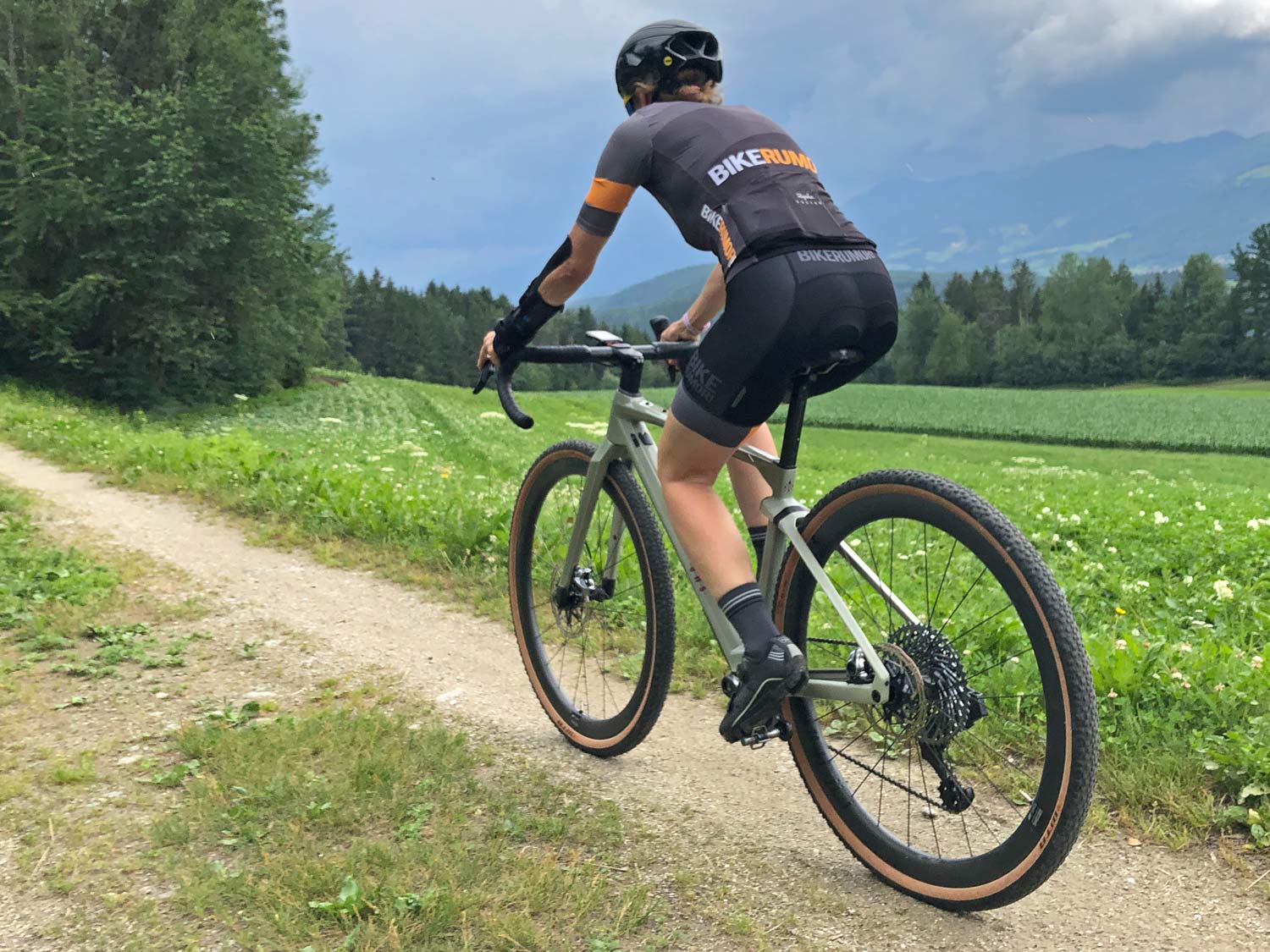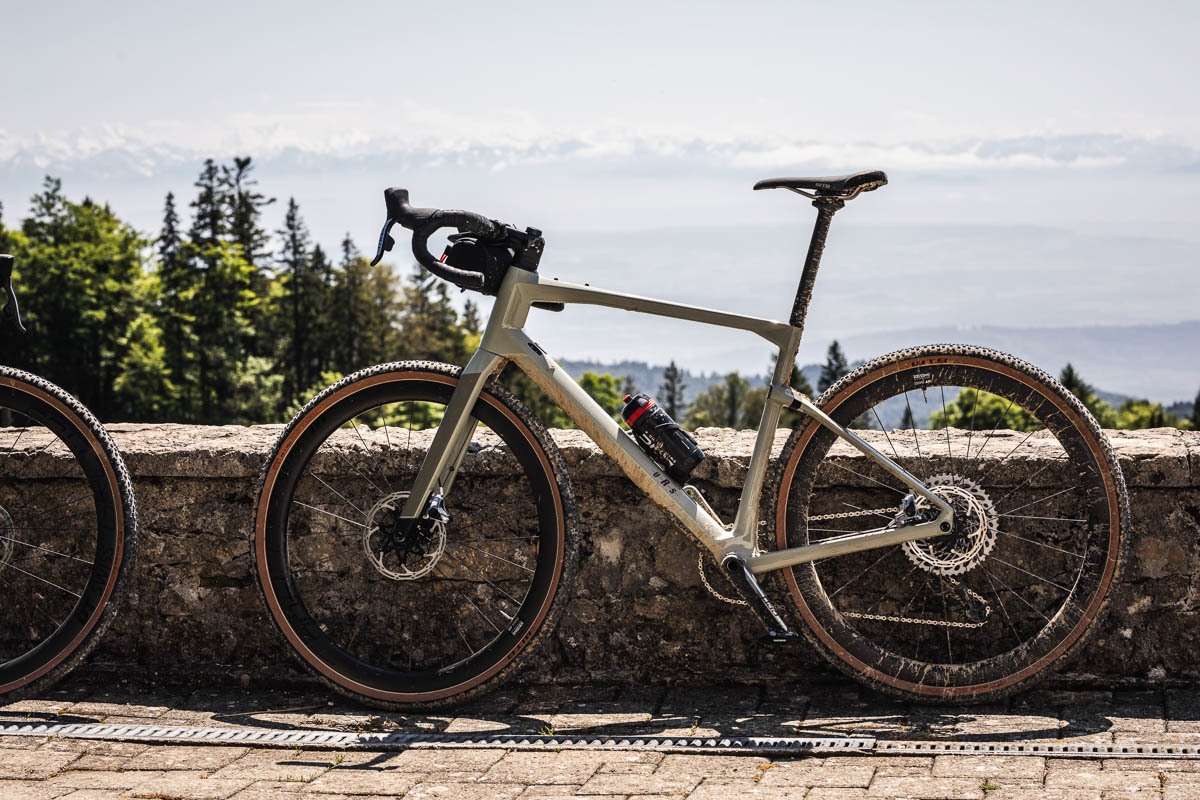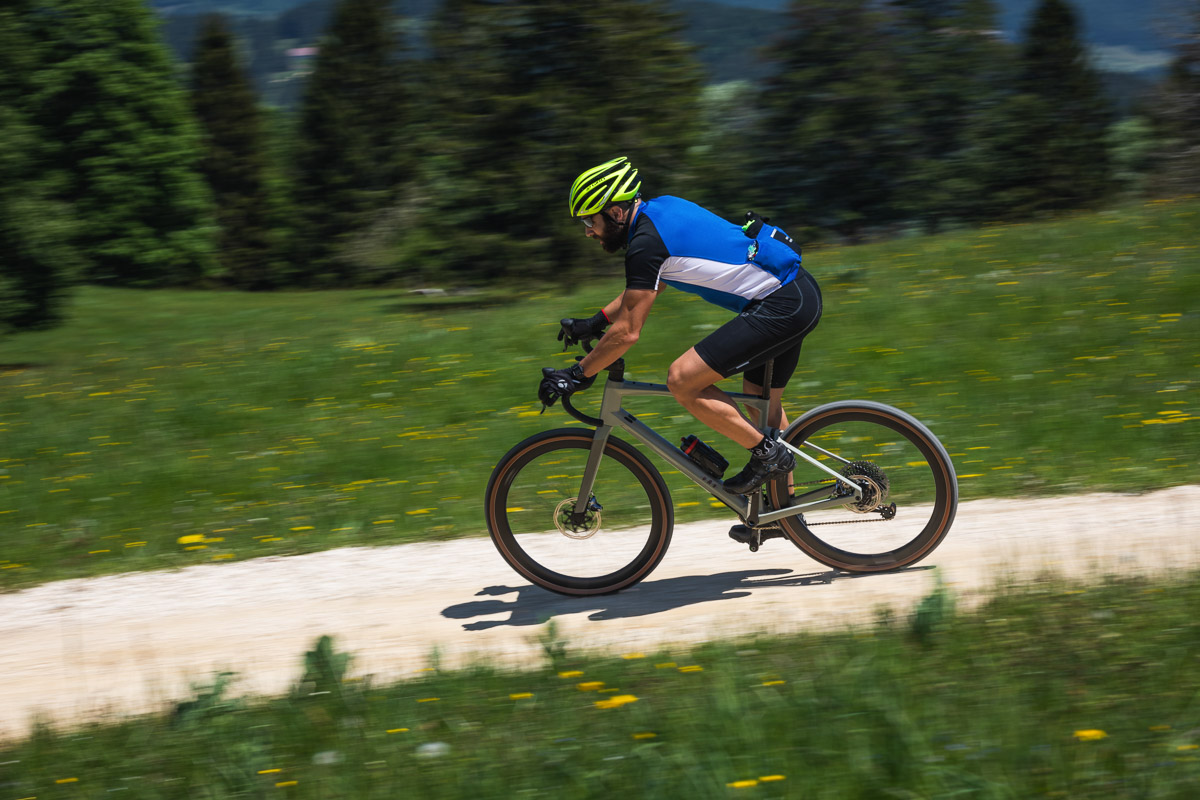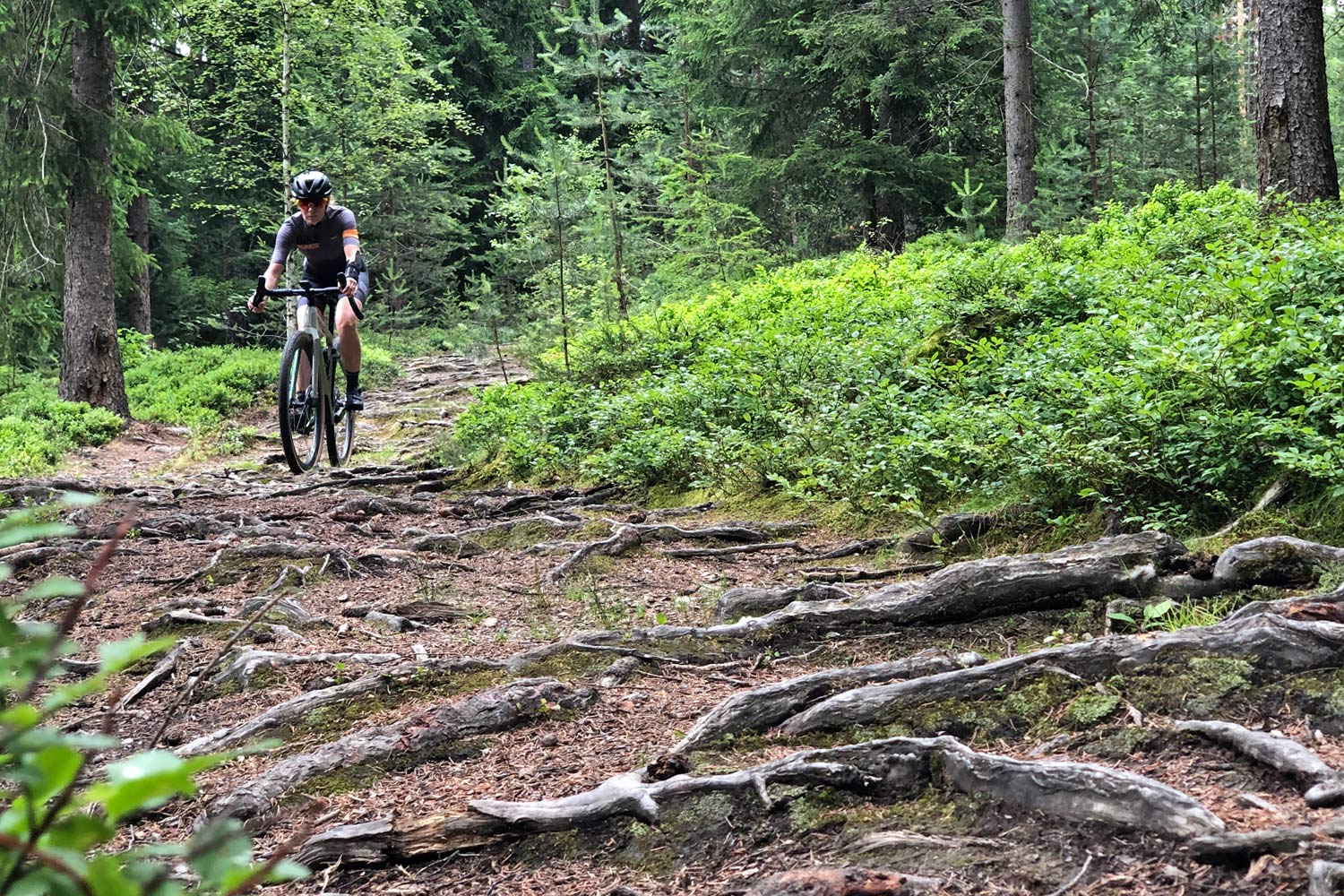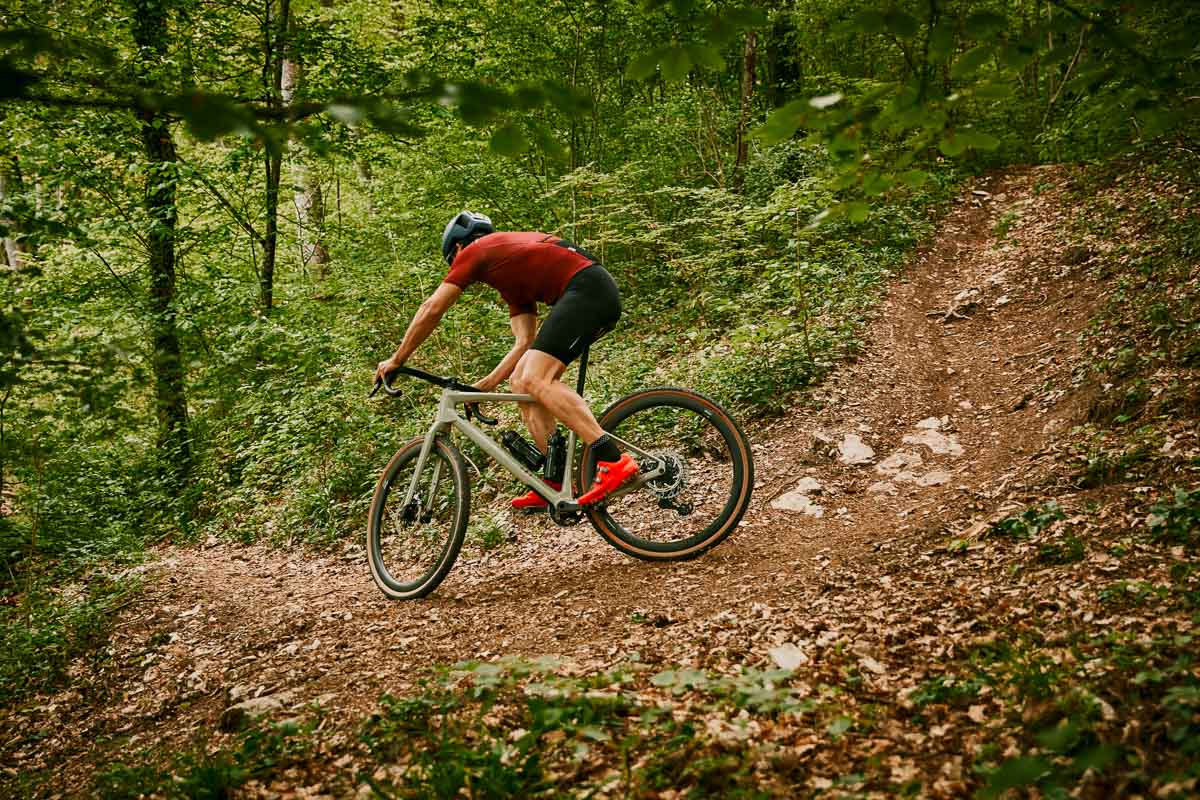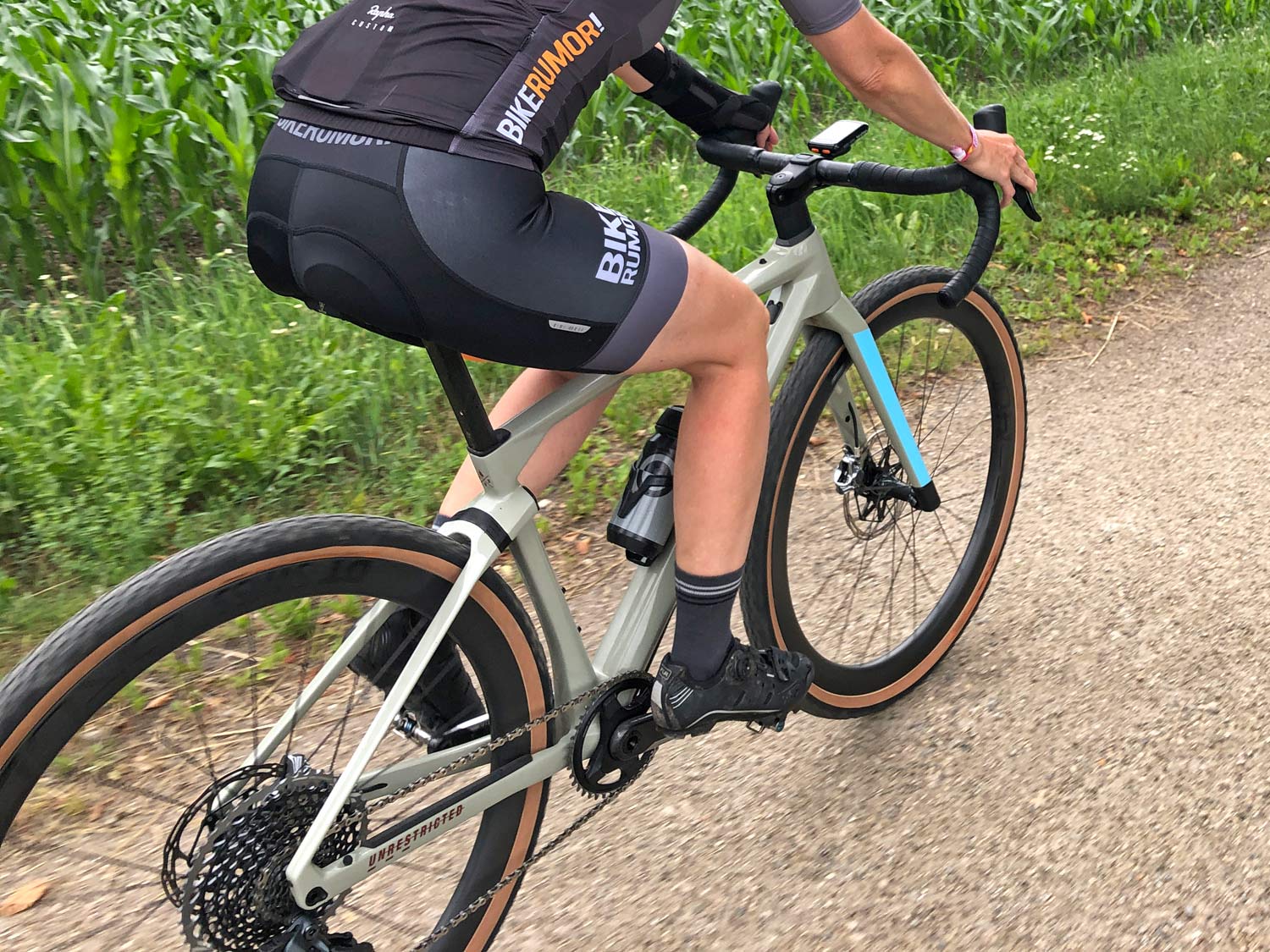BMC just released the URS, a new gravel bike with a geometry concept called “Gravel Plus”. We visited BMC HQ in Switzerland to check out the bike and take it on a day-long adventure, through mountainous terrain, gravel roads, and even long stretches of mountain bike trails. We even got a bit of extra time on the new URS in the Dolomites as well.
First Rides Review: BMC URS Gravel Plus adventure bike
BMC has finally moved beyond cyclocross racing and into the gravel scene. We already did an in-depth tech overview of the new BMC URS (short for ‘UnReStricted’), so check it out if you haven’t already. In short, the platform is all-new, combining BMC’s soft-tail MTT suspension with a 1x-specific drivetrain and all-internal cable management. And of course, a new non-UCI-legal geometry concept called Gravel Plus.
Let’s be clear. While the word ‘Plus’ is typically used to refer to tire sizes (i.e. 27.5+, 29+ for wide ~2.6 – 3.0” options), BMC uses it to refer only to the geometry of the URS. Similar to the evolution of mountain bike geometry, it uses a long top tube and wheel base, combined with a slack head tube angle and (very) short stem – 55mm in Small and Medium frames, and 70mm in Large and XL frames. BMC claims that this setup improves control and responsiveness on demanding terrain, and adds capability on loose high-speed terrain.
My test bike was a size Large (I’m 6’1”) URS ONE, outfitted with a mix of SRAM Red and Eagle AXS, along with the BMC ICS stem. The handlebar is an Easton EC70 AX, which I’ve used before – and love the short reach and overall shape.
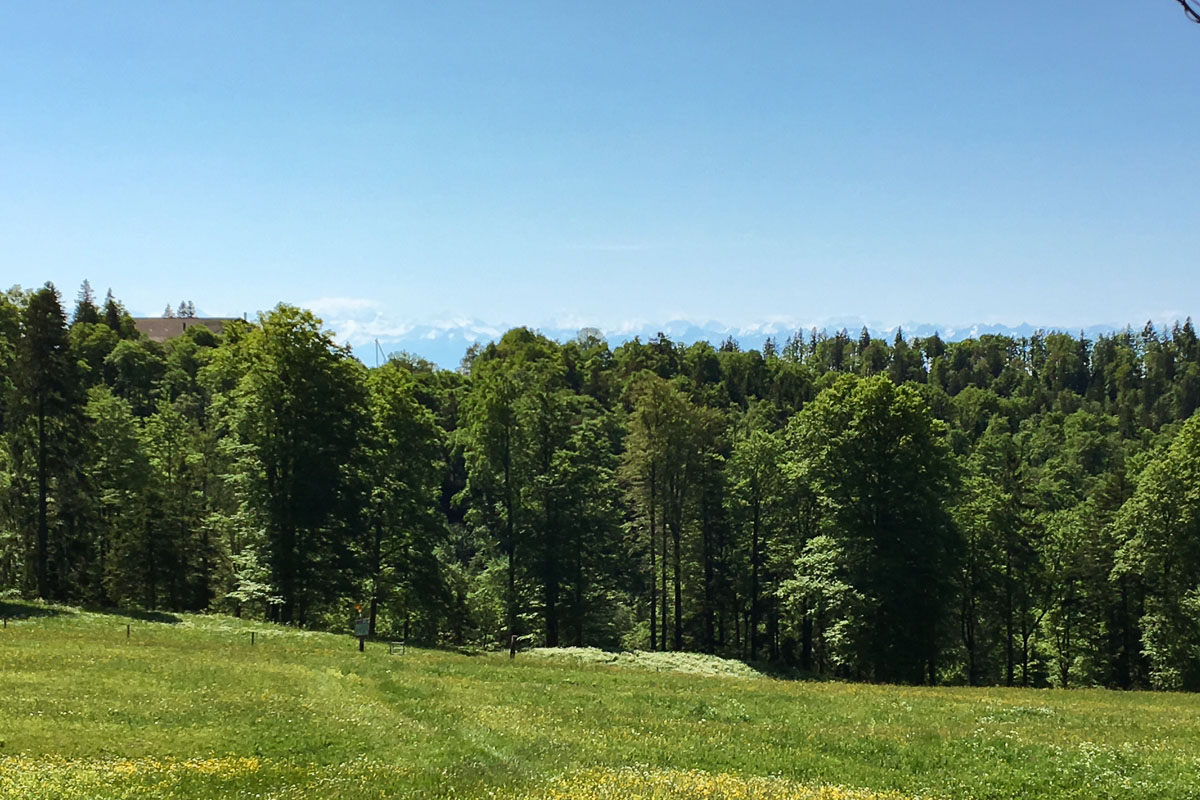 Our ride began up in the mountains above Solothurn (we got up there via the outstanding Alpenchallenge AMP Road with Shimano STEPS system). Right off the bat you notice the impressive light weight of the URS ONE (8.3kg / 18.3 lbs) – and it should be at $9,499. I initially thought that the Eagle 10-50 cassette was going to be excessive for gravel riding, because, well, that’s a lot of gear. While we weren’t quite sure how far we’d be riding, I was reasonably certain I’d leave at least one or two cogs unused. Spoiler alert: BMC had more than just light gravel riding planned to introduce us to Gravel Plus, so many gears were used.
Our ride began up in the mountains above Solothurn (we got up there via the outstanding Alpenchallenge AMP Road with Shimano STEPS system). Right off the bat you notice the impressive light weight of the URS ONE (8.3kg / 18.3 lbs) – and it should be at $9,499. I initially thought that the Eagle 10-50 cassette was going to be excessive for gravel riding, because, well, that’s a lot of gear. While we weren’t quite sure how far we’d be riding, I was reasonably certain I’d leave at least one or two cogs unused. Spoiler alert: BMC had more than just light gravel riding planned to introduce us to Gravel Plus, so many gears were used.
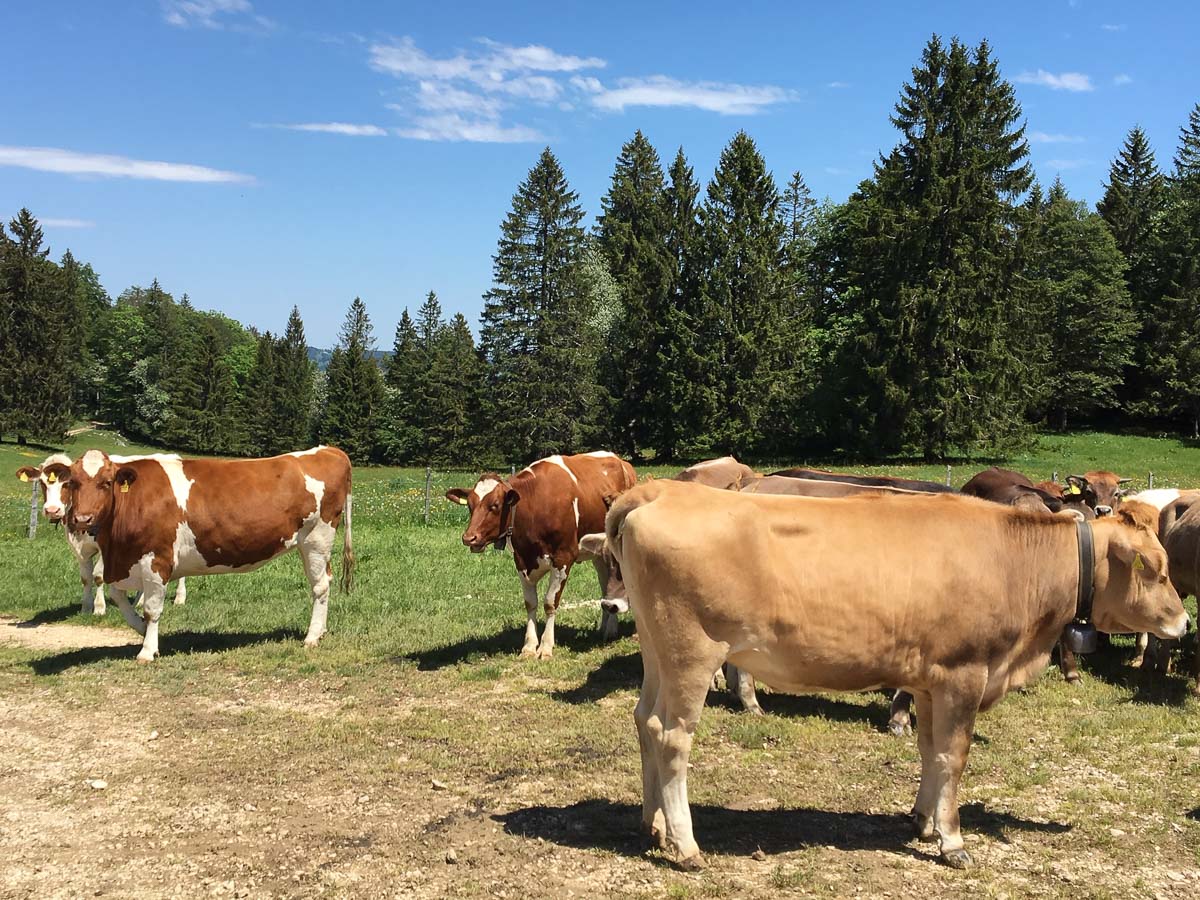 Things started out as you’d expect – sunny skies above the fog line, brown gravel roads, and herds of healthy-looking Swiss cows. We encountered some unexpected road construction that left us hiking for a quarter mile or so, but nothing out of the ordinary. Pedals turned, photos were taken, and laughs were had.
Things started out as you’d expect – sunny skies above the fog line, brown gravel roads, and herds of healthy-looking Swiss cows. We encountered some unexpected road construction that left us hiking for a quarter mile or so, but nothing out of the ordinary. Pedals turned, photos were taken, and laughs were had.
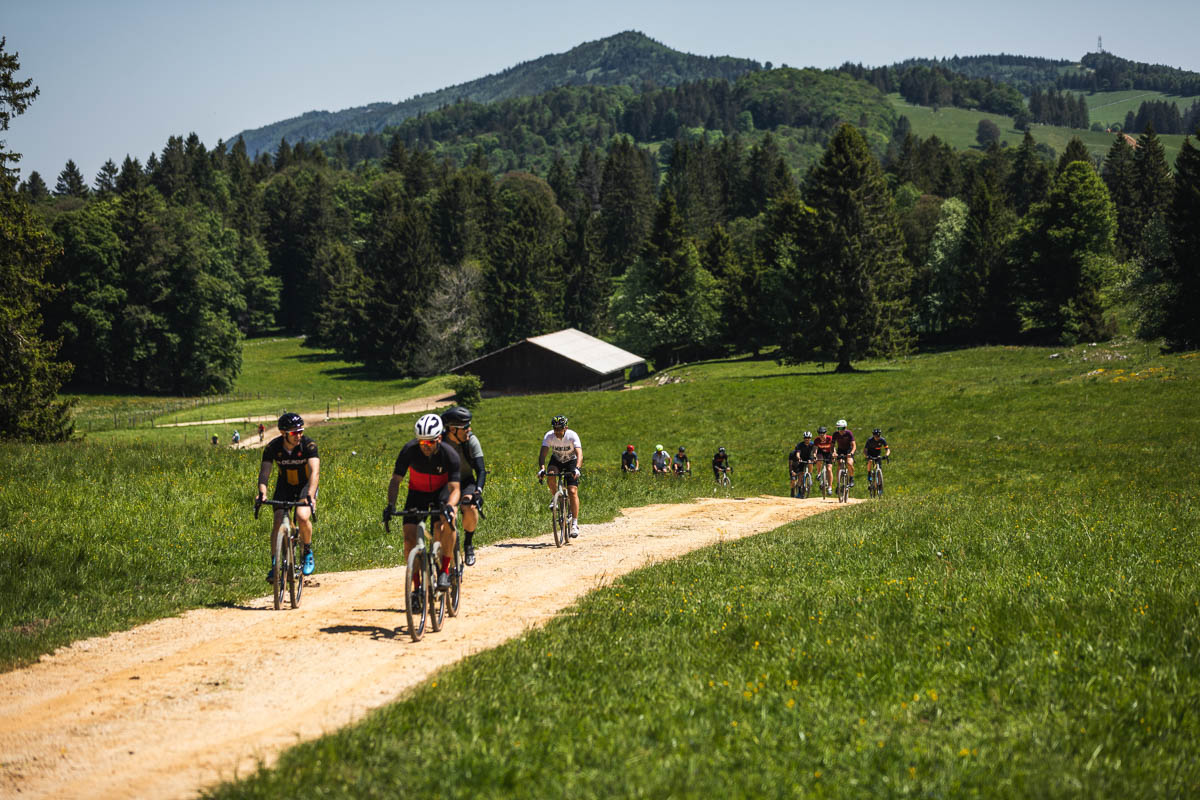 The gravel continued, mixed with some bits of road. Per usual, tire pressures were set conservatively to start, and I found myself dabbing air out several times. This was also partially prompted by my handlebar slipping a bit in the ICS stem clamp on some rough gravel trails with rocks and decent sized hits. It’s a sleek-looking two-bolt affair and had been installed with carbon paste, but it’s hard to know whether the slip was due to anything beyond insufficient bolt toque. We tightened things down, and it stayed put for the rest of the day.
The gravel continued, mixed with some bits of road. Per usual, tire pressures were set conservatively to start, and I found myself dabbing air out several times. This was also partially prompted by my handlebar slipping a bit in the ICS stem clamp on some rough gravel trails with rocks and decent sized hits. It’s a sleek-looking two-bolt affair and had been installed with carbon paste, but it’s hard to know whether the slip was due to anything beyond insufficient bolt toque. We tightened things down, and it stayed put for the rest of the day.
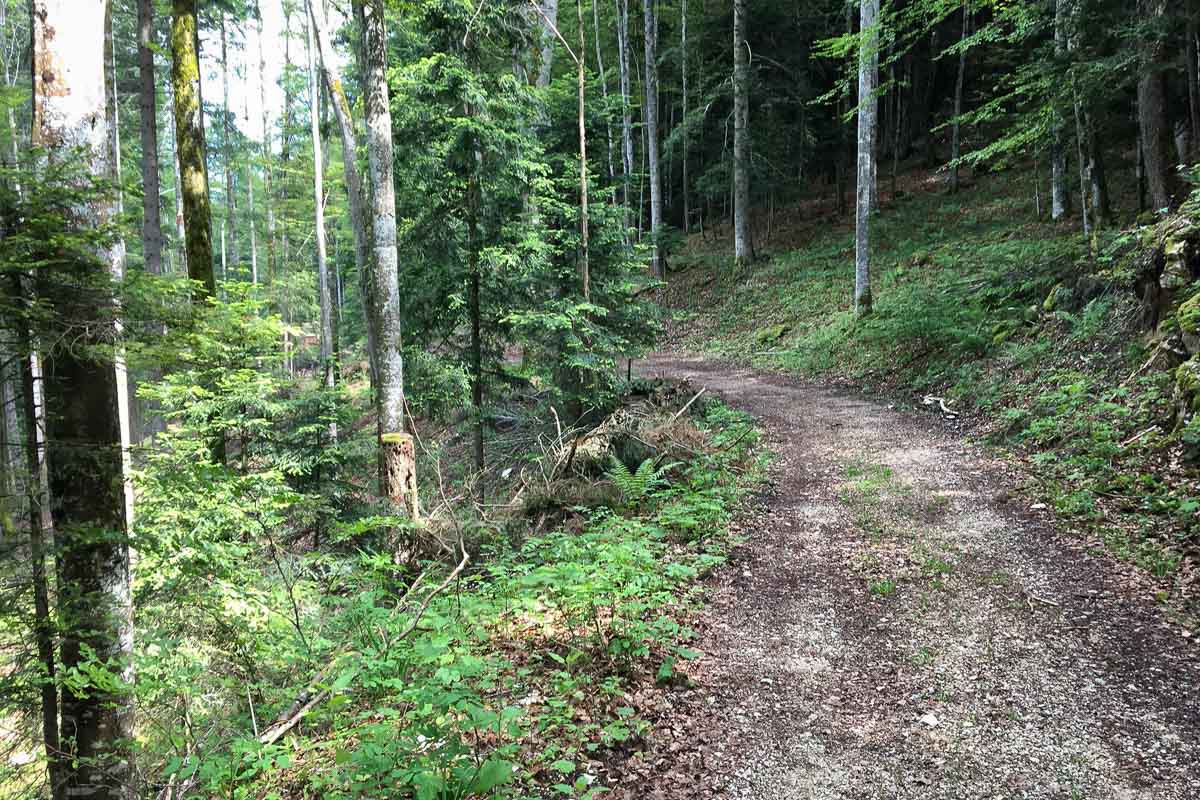 The ride went on through vast rolling hills, and onto fast descents so rough that my hands cramped and my forearms, wrists, and shoulders ached. Water bottles launched out of bottle cages. I dabbed more air out of my tires. While my hands struggled to brake, I was impressed at the utter lack of skidding from the WTB Resolute tires, and the bike held its line. We were doing riding well beyond what I’d call ‘gravel’, so I suppose it’s safe to say that the Gravel Plus geometry was working. If it needs mentioning, the photos don’t do the ride justice, mostly because of the logistical difficulties of getting a photographer out in front at the right time on aggressive trails.
The ride went on through vast rolling hills, and onto fast descents so rough that my hands cramped and my forearms, wrists, and shoulders ached. Water bottles launched out of bottle cages. I dabbed more air out of my tires. While my hands struggled to brake, I was impressed at the utter lack of skidding from the WTB Resolute tires, and the bike held its line. We were doing riding well beyond what I’d call ‘gravel’, so I suppose it’s safe to say that the Gravel Plus geometry was working. If it needs mentioning, the photos don’t do the ride justice, mostly because of the logistical difficulties of getting a photographer out in front at the right time on aggressive trails.
We still had a monster climb headed our way of a distance I can’t recall, but we were warned that it’d be at least 30-45 minutes of solid climbing. Time to test those gears.
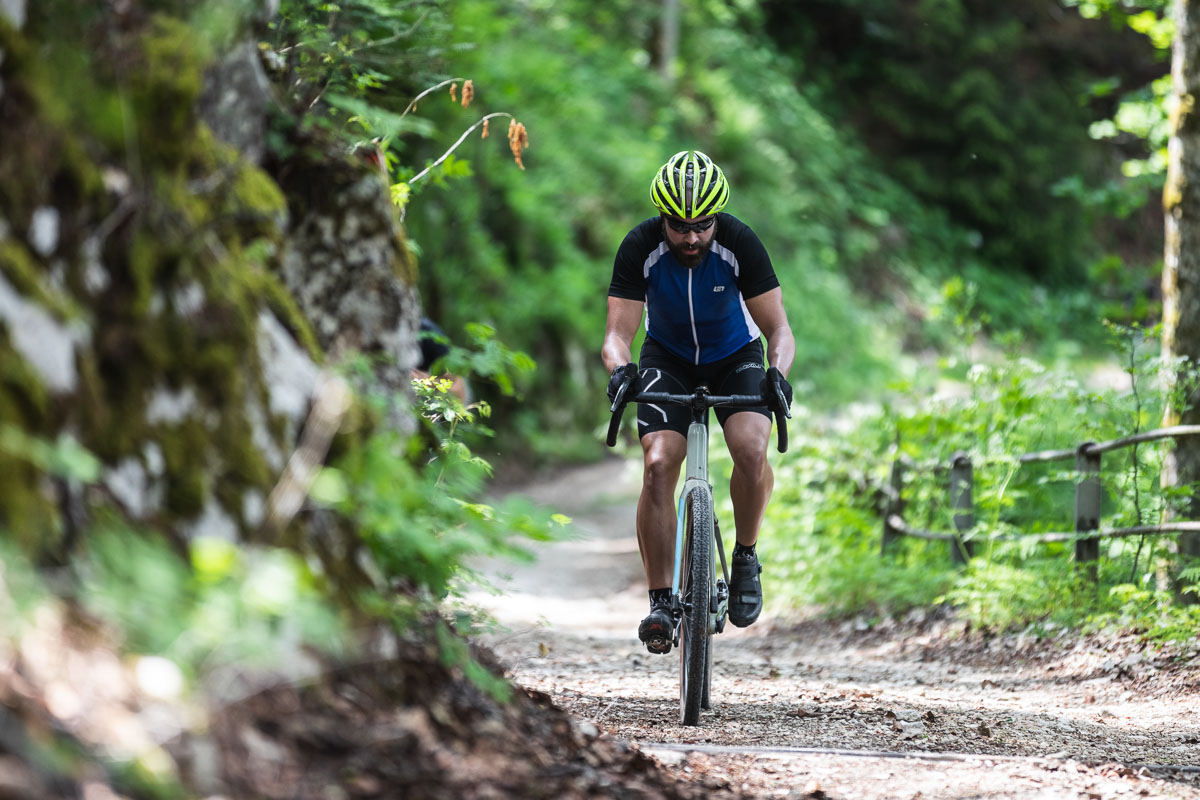
To say we climbed is an understatement. In a short time, I was all the way in my 50-tooth big cog (with 38t chainring), half-wishing for more, but realizing that this would result in ride speeds that would likely be slower than walking. I just had to gut it out, and find a rhythm of pushing the pedals and telling myself not to quit. Small logs and obstacles became mini sprints above threshold. Everything hurt, including my butt from days of riding on unfamiliar saddles. On the technical side, the bike had zero complaints, burps, or perceptible flex anywhere… I was the problem.
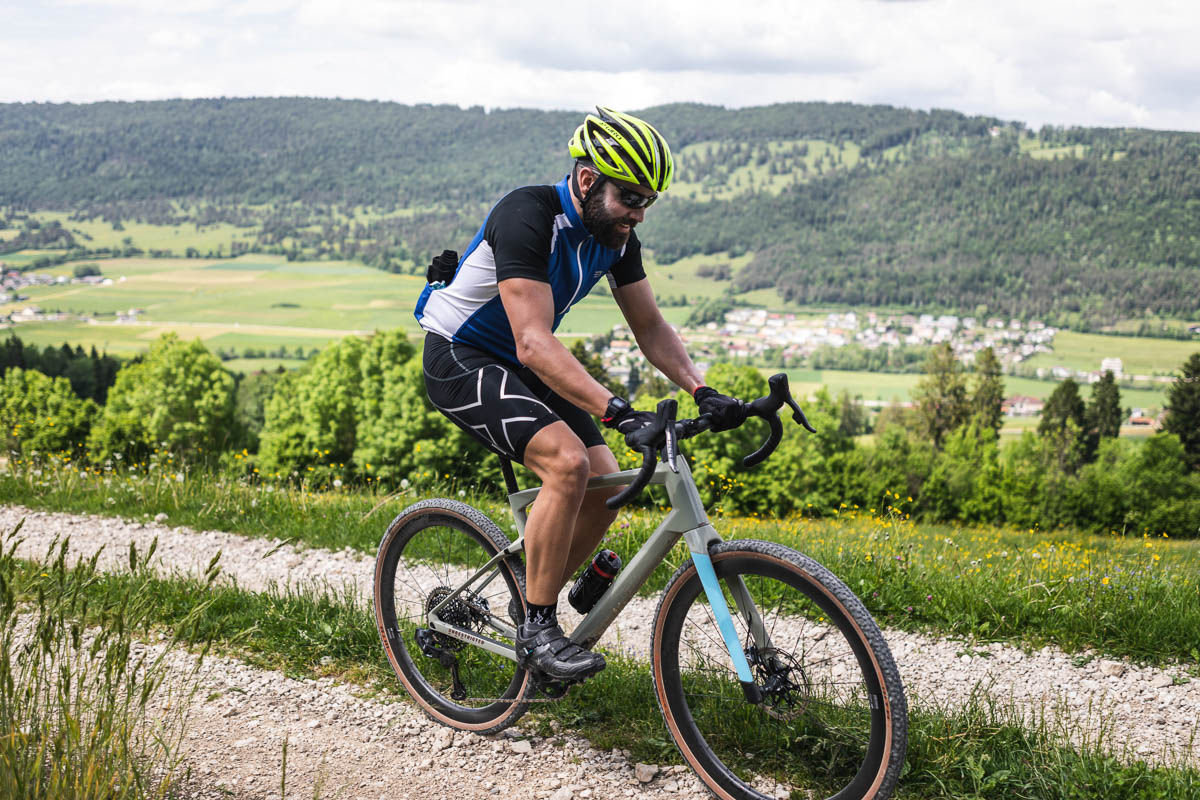 The nice version is that the ride was epic. It was beautiful and impossible and reminded me of how hard riding a bike can be. It also taught me something about 1x gearing for gravel, which I’ll summarize with a quote from a restaurant job I had in high school – answering the question of how much dressing one should apply to a Caesar salad – “Too much is never enough.”
The nice version is that the ride was epic. It was beautiful and impossible and reminded me of how hard riding a bike can be. It also taught me something about 1x gearing for gravel, which I’ll summarize with a quote from a restaurant job I had in high school – answering the question of how much dressing one should apply to a Caesar salad – “Too much is never enough.”
The not-as-nice version is that that the more I ride gravel bikes, the more I appreciate what mountain bikes can do. After tackling the huge climb, we still had a long way to go through blinding-fast washboard descents, more climbing, and more ‘Gravel Plus’ sections… which are called ‘Mountain Biking’ where I’m from. Don’t get me wrong – this is not a knock on BMC or the URS – which did better than I’d expect of any gravel bike on such terrain. It’s just a reiteration of the truth that mountain bikes with suspension are a faster, safer, and more comfortable way to navigate trails that can be survived or picked through by a skilled rider on a gravel bike.
Our ride would’ve been made more comfortable with a Fox AX fork (with which the URS is compatible), but the drop bar design is the larger issue when the going gets rough. You can wrap your thumbs all the way around an MTB flat bar, where the drop bar hoods leave you struggling to not slide off the top. Yes, you can ride in the drops with your thumbs fully wrapped, but this can make it hard to reach the brake levers, especially over heavy washboard trails. The mountain flat bar is simply a better design for riding off-road.
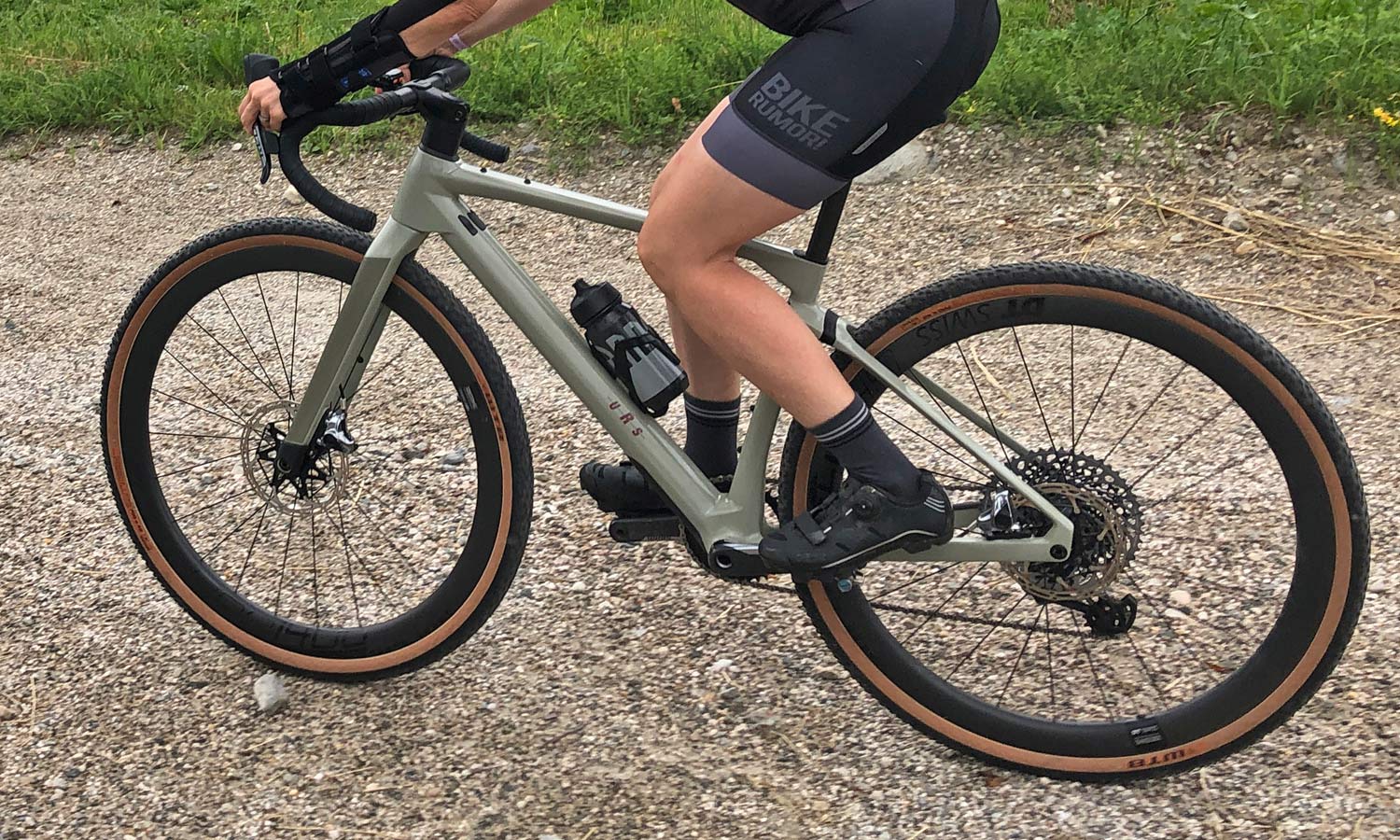 Ed: Besides Greg riding the Large URS, Veronika spent some time riding gravel road & root-strewn trails on a Small URS One in Italy last week, as well. Her test bike was fitted with that short 55cm stem, which together with the long-for-a-Small 403mm reach kept her hands in the same position she usually has with a 90mm stem on a more conventional geometry gravel bike. It also has an upright position with a high front end of 538mm stack, plus another few cms of spacers under the stem on her test bike.
Ed: Besides Greg riding the Large URS, Veronika spent some time riding gravel road & root-strewn trails on a Small URS One in Italy last week, as well. Her test bike was fitted with that short 55cm stem, which together with the long-for-a-Small 403mm reach kept her hands in the same position she usually has with a 90mm stem on a more conventional geometry gravel bike. It also has an upright position with a high front end of 538mm stack, plus another few cms of spacers under the stem on her test bike.
Veronika’s impressions fit pretty well with Greg that that longer, higher front end, paired with the micro travel did make the URS quite capable on technical trails that push the limits of what a gravel bike would normally handle. But it’s still not quite a mountain bike…
She didn’t spend all day on the URS so can’t really speak to the long-term comfort of the mostly imperceptible 10mm of theoretical rear wheel travel – not really feeling the micro travel more than standard tire flex. But the bike did seem like it was slightly less quick sprinting up steep climbs than a comparable light carbon gravel bike with conventional geometry – not a surprise with the ‘Gravel Plus’ focus.
OK, now back to Greg…
The final note I’ll make on the URS goes back to the gearing. With a 38t chainring and 10-50 cassette, I used every bit of both ends, and could have used more top-end on several occasions… even getting a dozen pedal strokes would’ve been enough to bridge gaps in the group on a few descents. Fitter and lighter-weight riders should consider using a larger chainring size to help address this. The lower-spec models all come with a 40t ring and 11-42 cassette, which is a much narrower range than what we tested.
It’s a problem of equipment evolution that hasn’t yet caught up with itself, with no affordable 12-speed mechanical drop bar shifters available that work with the wide-range MTB cassettes and rear derailleurs from Shimano and SRAM. After our test, I consider 10-42 to be the absolute minimum you need for 1x gravel, and that won’t be enough if you’re riding MTB trails at altitude like we did.
